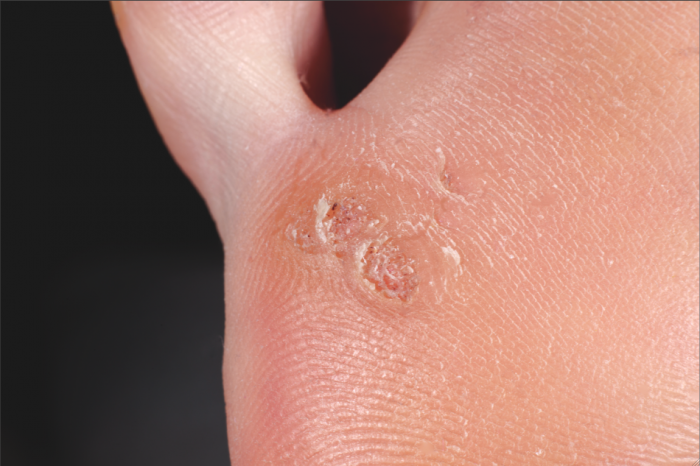
Certain human papillomavirus (HPV) types commonly infect keratinized skin. Cutaneous warts are a discrete benign epithelial hyperplasia with varying degrees of surface hyperkeratosis manifested as minute papules to large plaques; lesions may become confluent forming a mosaic. The extent of lesions is determined by the immune status of the host.
Causes of Human Papillomavirus
HPV and genital warts are usually spread by direct skin-to-skin contact during vaginal, anal, or oral sex with someone who has this infection.
Symptoms of Human Papillomavirus
Visible bumps, called genital warts, can be seen in your genital area. They almost never lead to cancer.
In some cases, your body may be able to clear the infection and the HPV virus goes away.
Genital warts are growths on your skin that look like tiny bumps. They are usually in or around the vagina, anus, on the cervix, or on the inside of the thigh.
Diagnosis
Usually made on clinical findings. In the immunocompromised host, HIV-induced see at periungual sites or anogenital region should be ruled out by lesional biopsy.
Treatment
Goal
Aggressive therapies, which are often quite painful and may be followed by scarring, are usually to be avoided in that the natural history of cutaneous HPV infections is for spontaneous resolution in months or a few years. Plantar warts that are painful because of their location warrant more aggressive therapies.
Patient-initiated therapy Minimal cost; no/minimal pain.
- For small lesions 10-20% salicylic acid and lactic acid in collodion.
- For large lesions 40% salicylic acid plaster for 1 week, then application of salicylic acid-lactic acid in collodion.
- Hyperthermia for verruca plantaris Hyperthermia with hot water (113°F) immersion for 1/2 to 3/4 h two or three times weekly for 16 treatments is effective in some patients.
Clinician-initiated therapy Costly, painful.
- Cryosurgery – If patients have tried home therapies and liquid nitrogen is available, light cryosurgery using a cotton-tipped applicator or cryospray, freezing the wart and 1 to 2 mm of surrounding normal tissue for approximately 30 s, is quite effective. Freezing kills the infected tissue but not HPV. Cryosurgery is usually repeated about every 4 weeks until the warts have disappeared. Painful.
- Surgery – Single, nonplantar verruca vulgaris:curettage after freon freezing; surgical excision of cutaneous HPV infections is not indicated in that these lesions are epidermal infections.
References